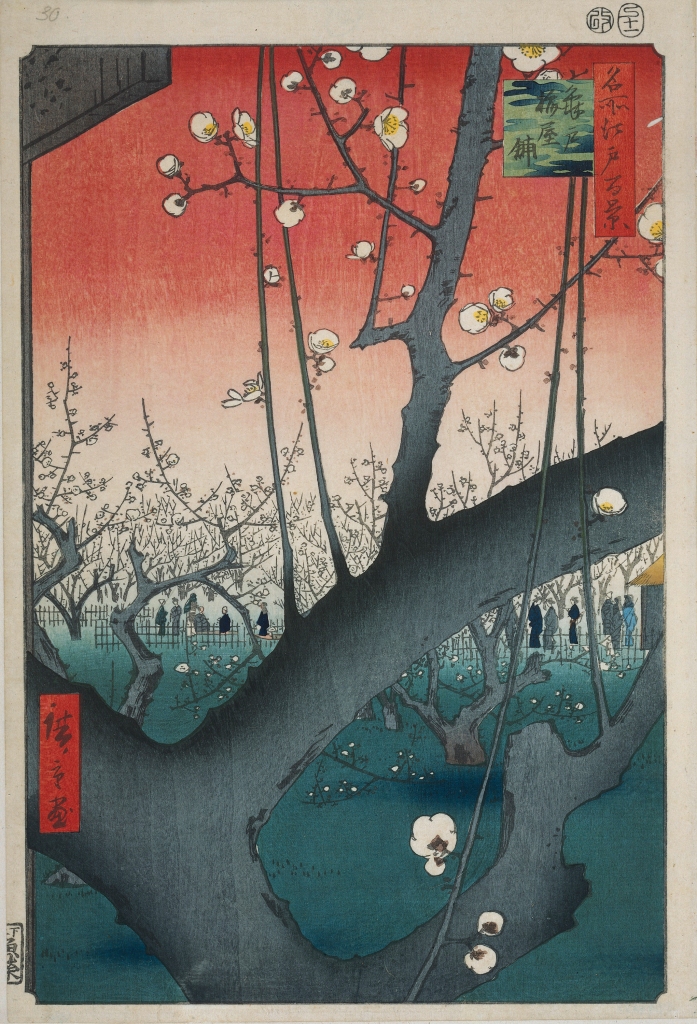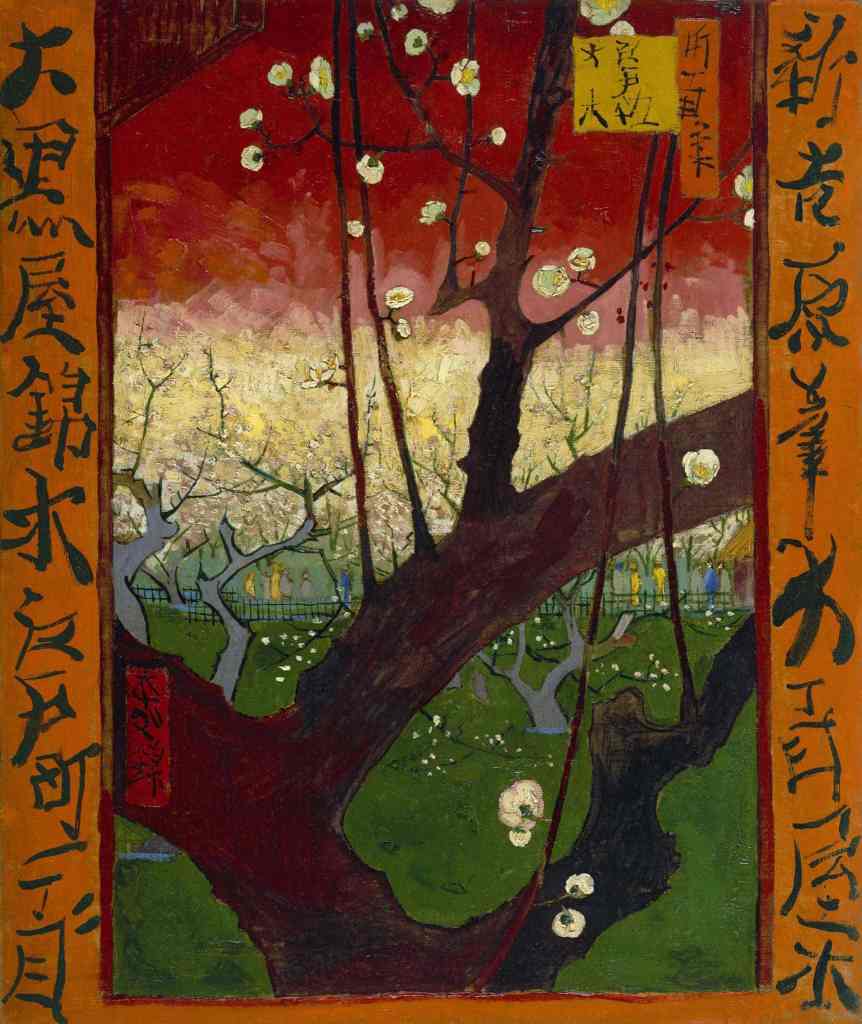February Art: Japan
Today in Japan it is the emperor’s official birthday, but being a bit wary of emperors February Art pays a refracted tribute instead. The textiles and customs of Japan were all the rage in the Japonisme of Paris and London, and for artists like Whistler and the Impressionists it was the bold forms of woodblock prints that had the most effect. In Antwerp Van Gogh started buying cheap Japanese prints to decorate his flat, but it was only when he moved to Paris and studied them closely that their influence can be felt, and their obsessive collector discovered ‘Japanese art is like the primitives, like the Greeks, like our old Dutchmen […] it doesn’t end’.
Three amongst his collection he copied into oils, including this 1887 study of a dramatically silhouetted tree borrowed from Utagawa Hiroshige’s ‘Flowering Plum Orchard’ (1857). Drawing and painting is all about representation on a flat surface – one answer to the obvious distortion of reality is to accept it, making the artist simply the arranger of shapes. Doing so allowed Japanese woodblock artists to become masters of composition, hiding horizons, cutting objects off at the edges, arranging bands of colour to burst out of the image, and writing to break the frame.
For his adaptation Van Gogh employed even brighter hues, rounding the background figures to give them life, unscrupulously borrowing from another print a framing device of orange and black characters. Such appropriation of Japanese art allowed him to see the world and picture-plane anew, and when he moved to the south of France this would find revolutionary apotheosis: ‘After some time your vision changes, you see with a more Japanese eye, you feel colour differently’.



